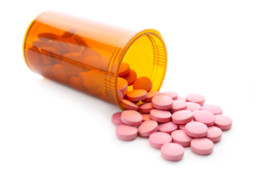Role Of Quality Control In The Pharmaceutical Industry
The impact of this can be severe and cause serious harm or even death. This is why it is vitally important for pharmaceutical companies to maintain good manufacturing practices.
One of the ways of mitigating the risk of compromised product quality is to have a quality system in place. This involves carrying out validation activities at different stages in pharmaceutical processing so that quality is maintained throughout.
The use of colors in pharmaceuticals can also provide the following benefits:
- A distinct color makes the medicine more difficult to imitate, reducing the risk of counterfeits
- It can make it easier to read the dosage of the medicine, with a white pill this can be difficult to read, this then reduces the risk associated with taking the incorrect dosage. According to the FDA medication errors cause 7,000 deaths per year.
- Where consumers take more than one medication the ability to easily differentiate is an important factor.
- The color of the product can influence consumer perception and lead to increase brand loyalty according to a study in the International Journal of Biotechnology. A standardized color also leads to an increase in brand recognition.
As well as the medicine itself being tightly regulated by the FDA the packaging of the medicine also has to adhere to strict guidelines. This means that color control is also required on the packaging.
Advantages of validation in pharmaceutical industry
Pharmaceutical companies carefully document the colors of their specific compounds for quality control, and for patent and trademark reasons. The chemical makeup and compounding techniques used to create a medication influences its color, allowing pharmaceutical companies to build color profiles for each of their products. Pharmaceutical manufactures use spectrophotometers in production to formulate and control the color of the final product.
During the manufacturing process from the creation of the initial drug products through to the creation of packaging spectrophometry is used to ensure that the color of the drug or packaging meet the expected result. The device will allow users to measure color to create a color signature which will then be the benchmark for future quality assurance.
By validating the correct color at different stages of the manufacturing process, the quality of the end product is ensured and companies can pinpoint where the process has been compromised. A spectrophometer allows for differences in appearance of materials to seen that would be invisible to the human eye. Another device in use is a hyperspectral camera, which can identify the composition of the material on a manufacturing line and identify whether the ingredients and concentrations are correct. In addition to use within the pharmaceutical industry itself color measurement devices can also be used by government agencies for control the the distribution of counterfeit medicines.
Spectrophotometers are key in the fight against counterfeit medications. Spectrophotometers analyze the color and appearance of objects. There are different types of spectrophotometers, ranging from handheld, for example the CM-17d, for field and production line use, to bench devices, such as the CM-5, often found in labs for quality control and research use.
These counterfeit medications are often comprised of substandard or event toxic chemicals resembling legitimate medications. Legitimate sounding companies then sell them to end users via the internet. Many underground organizations manufacture counterfeit medications and use airports, seaports, and roadways to ship to distribution points.
With the availability of high precision bench-top and portable spectrophotometers in major ports and government offices agents can measure the color against provided samples. Allowing them to identify counterfeit medications preventing many of these drugs from entering circulation.
Mobile drug testing labs are helpful when identifying an illegal drug manufacturing facility. These mobile labs quickly analyze the color and reflectance patterns of any confiscated materials using a spectrophotometer and compare the resulting data against the pharmaceutical company’s product profile.
Governments and manufactures, around the world use these high performance instruments to identify illegal medications, preventing further illness or even death to the end consumers.
When used color measurement devices on a regular basis it’s important to keep the device working well and properly calibrated for maximum performance. Our white paper discussing instrument validation in the pharmaceutical industry includes useful advice on how to get the best out of your instruments.










